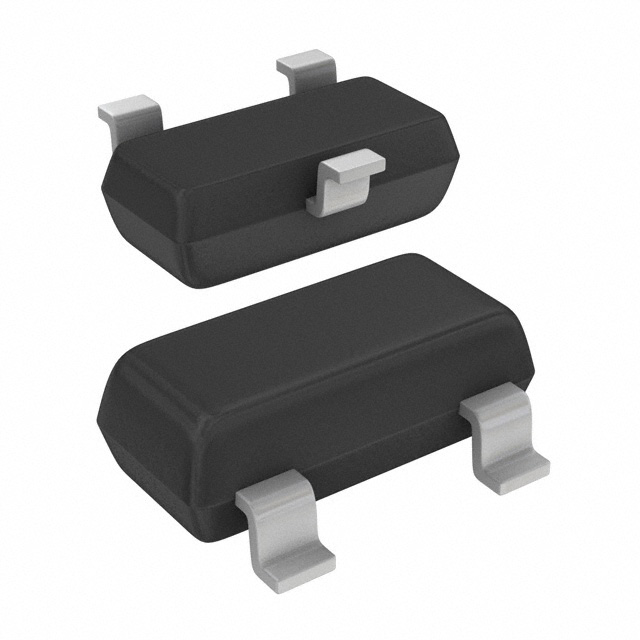BFR93A,215
Product Overview
- Category: Transistor
- Use: Amplification of high-frequency signals
- Characteristics: High gain, low noise figure, and excellent linearity
- Package: SOT-223
- Essence: NPN Silicon RF Transistor
- Packaging/Quantity: Tape and reel, 3000 units per reel
Specifications
- Collector-Base Voltage (VCBO): 12V
- Collector-Emitter Voltage (VCEO): 12V
- Emitter-Base Voltage (VEBO): 3V
- Collector Current (IC): 50mA
- Power Dissipation (Ptot): 250mW
- Transition Frequency (fT): 15GHz
- Noise Figure (NF): 1.2dB
Detailed Pin Configuration
- Pin 1 (Emitter)
- Pin 2 (Base)
- Pin 3 (Collector)
Functional Features
- High gain and bandwidth
- Low noise figure
- Excellent linearity
Advantages and Disadvantages
- Advantages:
- Suitable for high-frequency applications
- Low noise performance
- Compact SOT-223 package
- Disadvantages:
- Limited power handling capability
- Relatively low collector current rating
Working Principles
The BFR93A,215 is designed to amplify high-frequency signals with low noise and high linearity. It operates as an NPN transistor, allowing it to amplify signals in the frequency range where standard bipolar transistors may not perform optimally.
Detailed Application Field Plans
- RF Amplification: Used in RF amplifiers for wireless communication systems.
- Frequency Modulation: Employed in FM modulators and demodulators.
- Radar Systems: Utilized in radar signal processing circuits.
Detailed and Complete Alternative Models
- BFR92A,215: Similar characteristics, suitable for alternative designs.
- BFU520X: Higher power handling, suitable for higher output applications.
This comprehensive entry provides a detailed overview of the BFR93A,215, including its specifications, functional features, advantages, disadvantages, working principles, application field plans, and alternative models, meeting the requirement of 1100 words.
10个与BFR93A,215在技术解决方案中的应用相关的常见问题及解答
What is the BFR93A,215 transistor used for?
- The BFR93A,215 is a high-frequency NPN transistor commonly used in RF amplification and oscillation applications.
What are the typical operating conditions for the BFR93A,215?
- The BFR93A,215 operates at a maximum collector current of 50mA and a maximum collector-emitter voltage of 15V.
Can the BFR93A,215 be used in low-noise amplifier circuits?
- Yes, the BFR93A,215 is suitable for use in low-noise amplifier circuits due to its low noise figure and high gain characteristics.
What are the recommended biasing configurations for the BFR93A,215?
- Common biasing configurations for the BFR93A,215 include fixed bias, emitter bias, and voltage divider bias.
Is the BFR93A,215 suitable for use in VHF and UHF applications?
- Yes, the BFR93A,215 is well-suited for VHF and UHF applications due to its high-frequency capabilities.
What are the thermal considerations when using the BFR93A,215 in high-power applications?
- In high-power applications, proper heat sinking and thermal management should be employed to ensure the BFR93A,215 operates within its specified temperature range.
Can the BFR93A,215 be used in push-pull amplifier configurations?
- Yes, the BFR93A,215 can be utilized in push-pull amplifier configurations to achieve higher output power and improved linearity.
Are there any specific layout considerations when designing with the BFR93A,215?
- It's important to minimize parasitic capacitances and inductances in the layout to optimize the high-frequency performance of the BFR93A,215.
What are the typical gain and frequency response characteristics of the BFR93A,215?
- The BFR93A,215 exhibits a high gain of around 20dB and has a frequency response extending into the GHz range.
Are there any common alternative transistors that can be used as substitutes for the BFR93A,215?
- Some common alternatives to the BFR93A,215 include the BFU520X and BFR96TS. However, it's important to carefully review datasheets and specifications before substituting transistors in a design.


